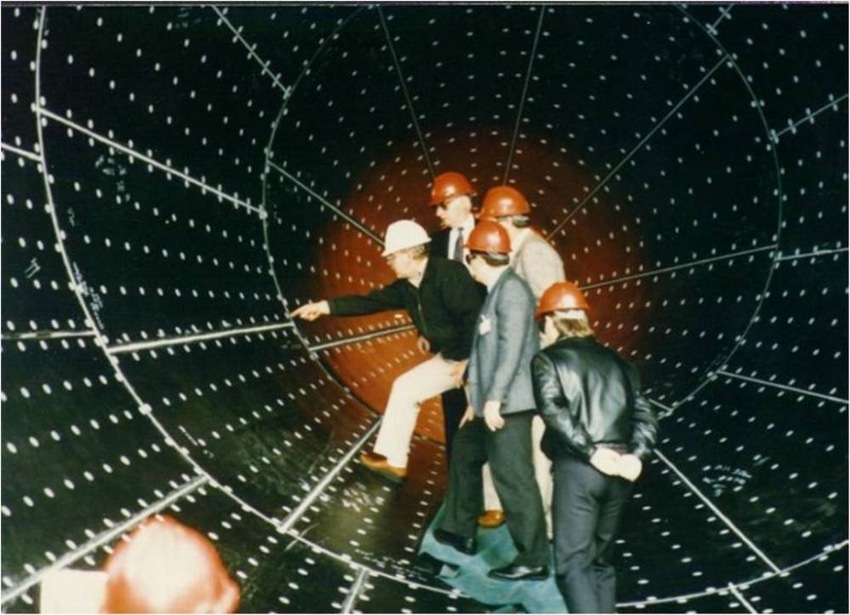March 30, 2015

Many companies are resorting to retrofitting their existing equipment as opposed to buying new equipment. If an older silo has to be replaced or repaired, or perhaps major flow issues are common, those required to make the decision have many considerations. The economy plays a major role in any industry. Within the powder handling industry, plants are being shut down as funds for upgrades to powder handling equipment are difficult to come by, and staff is being reduced, especially engineering staff.
Retrofitting existing equipment or purchasing new equipment is always a tough decision to make. As our economy continues to be erratic, companies are resorting to retrofitting existing equipment. This is not an entirely bad decision, because retrofitted equipment can perform quite reliably if designed properly. However, sometimes it is more practical to just build a new bin and feeder. A scientific approach is required to identify your problem areas, evaluate your material properties, and rectify your problems with existing solids handling equipment. The following is a discussion of what is necessary to provide a properly designed retrofit.
Identify Your Problem Areas
This requires knowledge of solids flow problems and their results. If you have read “Powder Perspectives” before, you are aware of the types of solids flow problems that can occur -- namely, no flow (due to arching or ratholing), erratic flow, flooding, segregation, and limiting discharge rate. Sometimes it is difficult to determine if your product is arching or ratholing, or both. Even if you look into the container from the top, you may not see a rathole, even though it is forming within the product. Segregation problems are somewhat more difficult to solve and typically require a site visit by an expert in the field.
Evaluate Your Material Properties
If you read some of the articles archived on this website, you will definitely notice a common thread to most of them. In order to reliably identify a flow problem and handle any bulk solid, you need to evaluate the flowability of your bulk solid. This requires you to use a reputable testing laboratory capable of determining your material’s:
• Cohesive properties to predict opening sizes to prevent bridging and ratholing, by determining your material's cohesive strength as a function of consolidation pressure
• Wall friction properties to determine hopper slopes for mass flow, by measuring the friction that develops between a bulk solid and any hopper wall material
• Compressibility properties to determine a material's bulk density as a function of consolidation pressure, which is required in the analysis of bridging, ratholing, and hopper angles
• A permeability test that predicts the limiting discharge rate of a solid by measuring its permeability to air or gas
Once you have identified your flow problems and evaluated your material's flow properties, you can develop possible solutions to those problems and retrofit your existing equipment.
Develop Possible Solutions
Use a Liner
Modifications to your existing equipment may be something as simple as installing a liner of stainless steel, Tivar 88 (an ultra-high molecular weight polyethylene liner supplied by Quadrant of Ft. Wayne, IN), Tivar Liner, or some sort of coating. A liner that develops less friction may allow your material to flow in mass flow and eliminate ratholing.
Use Expanded Flow
Perhaps you can "cut off" a portion of your funnel flow conical hopper and attach a properly designed mass flow hopper to provide an expanded flow pattern. The mass flow pattern developed by the mass flow hopper will expand into the funnel flow hopper and, if designed properly, will cause a stable rathole to become unstable and allow material to flow reliably. This figure shows an expanded flow approach.
Use a Splitter
Many solids handling applications require discharging material to two or more different processes or locations. This is typically done using a pant leg hopper to split the discharge to two points. However, if one of the processes is stopped, your mass flow silo is now funnel flow. The splitter shown here Splitter photo is designed to split your discharge in two directions and uses a vertical spool piece in between the legs and hopper outlet. If one process is stopped, the preferential flow channel that forms will expand within the vertical section, maintaining mass flow from the hopper above.
Use a Cone-in-Cone Design
This approach uses an inner cone (open at the top and bottom) to create mass flow and more importantly force material to flow along the walls of the shallow outer hopper. This is frequently used to modify and existing, shallow hoppered funnel flow silo, and convert it to reliable mass flow.
Sometimes it is easier to replace the entire funnel flow hopper with a properly designed mass flow hopper. As well, remember that the feeder design is as important as the bin design. If the feeder is not designed properly, modifying your hopper for mass flow may be a waste of time and money.About our author
Joseph Marinelli is a consulting engineer and president of Solids Handling Technologies Inc., Fort Mill, SC. He has been providing testing and consulting services since 1972. As a former consultant with Jenike & Johanson Inc., he has years of experience testing powders and designing bins and feeders for reliable flow. He lectures frequently on the topic of powder handling and has published several papers including an article in a chemical encyclopedia and two in a food powder book. Marinelli can be reached at 803-802-5527 or [email protected]
For related articles, check out our Powder Perspectives section
You May Also Like


